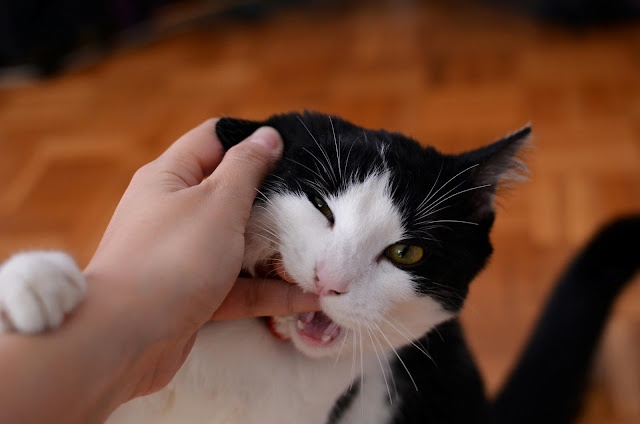The History of Cats: From Ancient Egypt to Modern Homes
The History of Cats: From Ancient Egypt to Modern Homes
Cats have been captivating humans for thousands of years, with a history that spans across different cultures and continents. From being revered in ancient Egypt to becoming beloved household pets today, the journey of domesticated cats is as fascinating as the creatures themselves. Let’s dive into the rich history of how cats evolved from wild predators to affectionate companions in our modern homes.
1. Ancient Egypt: The Rise of the Sacred Cat
Cats were first domesticated in the Near East, but it was in ancient Egypt where they truly became iconic. Egyptians revered cats for their ability to protect grain stores from rodents, which was vital for food preservation.
- Cats as Protectors: Egyptians admired cats for their hunting skills, which protected crops from pests like mice and rats. Their role in ensuring food security elevated their status in society.
- Worship and Deification: Cats were associated with the goddess Bastet, the deity of home, fertility, and protection. Bastet was often depicted with the head of a lioness or domestic cat, and cats were treated with reverence, even in death. Killing a cat, even accidentally, was punishable by law.
2. Cats in Ancient Civilizations: Greece, Rome, and Beyond
After Egypt, cats spread to other ancient civilizations like Greece and Rome. They continued to serve as protectors against rodents, but they were also loved for their companionship.
- Greeks and Cats: The Greeks admired cats for their independence and quiet demeanor. Cats were often kept in homes to protect against pests, and their hunting prowess was well-respected.
- Romans and Cats: In ancient Rome, cats were symbols of liberty. Romans kept them as pets, and their role as hunters of vermin was highly valued, especially as the empire expanded.
3. Medieval Europe: Cats and Superstition
During the Middle Ages, cats faced a darker chapter in their history. They were often linked to superstitions, witchcraft, and bad omens, particularly in Europe.
- Witchcraft and Cats: Black cats, in particular, were associated with witches and the supernatural. Many believed that witches could transform into cats or use them as familiars.
- Persecution: Unfortunately, during times of fear and superstition, cats were often persecuted, especially during the Black Death pandemic. Cats were killed in large numbers, which ironically led to an increase in rats, worsening the spread of the plague.
4. The Renaissance and Enlightenment: Cats Regain Favor
As superstition waned and rational thought took hold during the Renaissance and Enlightenment, cats once again found favor in homes across Europe.
- Cats as Pets: During this period, cats began to be seen more as companions and pets rather than just pest controllers. They were increasingly appreciated for their grace and beauty.
- Art and Literature: Cats started appearing in art and literature, symbolizing independence and mystery. They became muses for poets, painters, and even philosophers.
5. Cats in the Victorian Era: The Rise of the Pet Cat
The Victorian era marked a significant shift in how cats were viewed. It was during this time that the modern concept of cats as household pets truly began to take shape.
- Pets in the Home: Victorians loved animals, and keeping cats as pets became fashionable. Queen Victoria herself was known to be a cat lover, which helped popularize them as pets.
- Cat Shows: The world’s first cat show was held in London in 1871, further solidifying the cat’s place as a beloved domestic pet. Breeds like the Persian and Siamese were showcased and celebrated for their beauty.
6. Cats in Modern Times: From Street Cats to Internet Celebrities
In the 20th and 21st centuries, cats transitioned from being primarily outdoor animals to cherished indoor pets. With advancements in veterinary care, cat food, and litter, cats became easier to care for in modern homes.
- Indoor Cats: As cities grew and living conditions changed, cats adapted to indoor living. They became ideal pets for urban dwellers due to their independence and relatively low maintenance.
- The Internet Age: The rise of the internet has transformed cats into global celebrities. Memes, videos, and social media platforms have helped propel cats into the limelight. Famous internet cats like Grumpy Cat and Lil Bub have millions of followers, making cats more popular than ever.
Conclusion: From Deities to Companions
The journey of cats from ancient Egypt to modern homes is a testament to their adaptability and charm. Whether worshipped as gods, misunderstood as symbols of superstition, or adored as internet sensations, cats have always held a special place in human history. Today, they continue to bring joy, comfort, and companionship to millions of homes around the world.
As we look at the history of cats, it’s clear that these remarkable creatures have evolved alongside us, shaping and being shaped by the cultures that embraced them. From sacred temples to cozy couches, cats remain an enduring symbol of mystery, independence, and affection.
.png)






.jpeg)
.jpeg)



